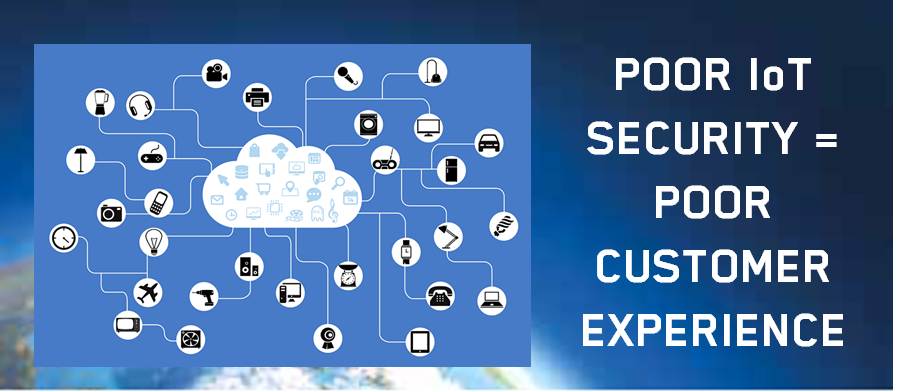 It doesn’t matter if you sell a product or service, one of the most critical elements enterprises are maniacally focused on is the user experience. Give a user a good experience and they will tend to come back. Do a really good job and your customer may bestow the highest form of praise by recommending you to someone else. It is unquestionably the best and most effective form of marketing.
It doesn’t matter if you sell a product or service, one of the most critical elements enterprises are maniacally focused on is the user experience. Give a user a good experience and they will tend to come back. Do a really good job and your customer may bestow the highest form of praise by recommending you to someone else. It is unquestionably the best and most effective form of marketing.
Click To Tweet: Poor #IoT Security produces a poor customer experience bit.ly/1R6F1Cj pic.twitter.com/OsonfIg6Mm
Customers come in all shapes and forms. They may be the traditional person that plunks down a credit card to buy something. But sometimes the customer may be an internal stakeholder such as the accounting or sales department that consumes your deliverable. Make things easy for the customer and they’ll love you for it; make it anything less than seamless and you may find that the internal customer finds ingenious “workarounds”. The external user may simply go to a competitor.
Today, we collect more information than ever before from external buyers, internal users and everyone in-between. The aptly coined term “internet of things” (IoT) gives us new insight on buyer behavior, usability information and user experience; valuable information that a mere ten years ago would have been something right out of science fiction.
The IoT’s ability to generate highly valuable and sensitive information is sought after by organizations but is also a treasured target for hackers and cyber criminals. Whether they leverage it for their own purposes or sell it to the highest bidder, the information and insight derived from just one successful breach is enough to sink a company and put virtually anyone that has interacted with the company in some way, at risk.
Improving customer experiences is not new for organizations, but one area that tends to get overlooked is the usability of security measures which is often termed “the weak link in the customer experience”. With the relatively new but highly desired technologies being leveraged by organizations such as Big Data and IoT, security usability within the same has not kept up. Organizations have essentially been forced to deploy security in such a way that makes the experience of things (XoT) that customers and internal users have come to expect, anything but seamless. The question plaguing many organizations is whether the customer experience must suffer in order to deploy the right security to keep us safe?
The most effective way to ensure the security of your organization is to render that which is sought after unusable to the miscreant that is seeking it. Leveraging data encryption ensures that sensitive data whether it is customer information, company information or insights gleaned from the IoT, remains your own and is totally useless to the outsider. With transparent encryption, this same information can quickly be secured without taking a performance hit or altering the user experience. Customers can continue to enjoy the high quality interactions with the organization while at the same time feeling confident that their information remains their own.
New technologies will continue to be introduced yielding opportunities to the business and insights about the customer like never before, but it is not without risk. Balancing exceptional user experiences with the right security is not only a good idea, it is essential. Users want to be catered to, but they also want to be reassured that their information remains secure. With transparent encryption, your internal and external customers alike can sleep easy and do it in the style they have become accustomed to, in a way that only you can provide.
